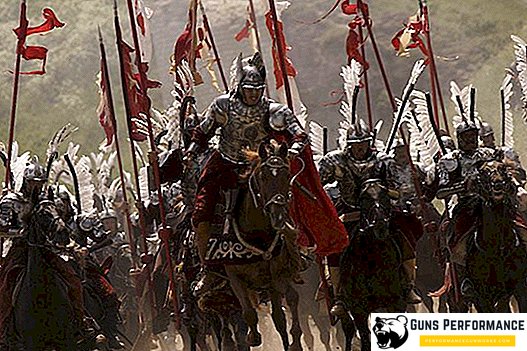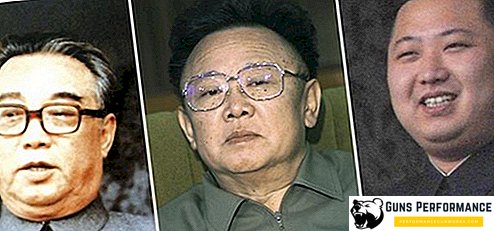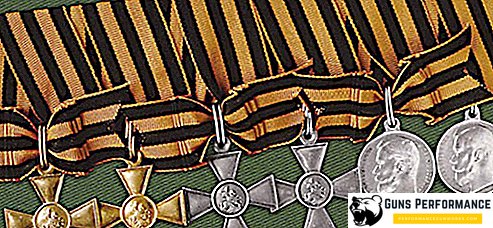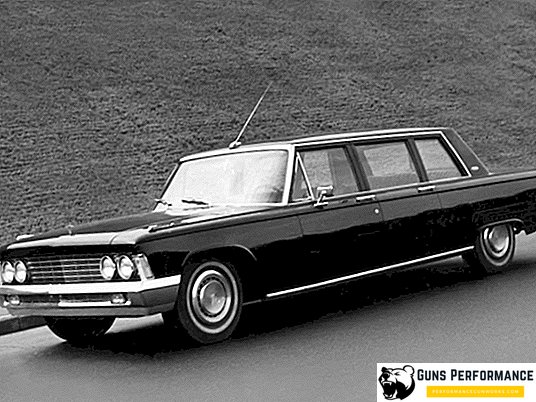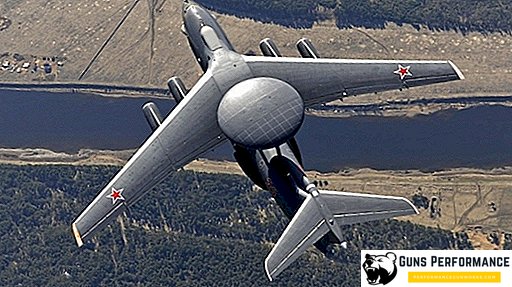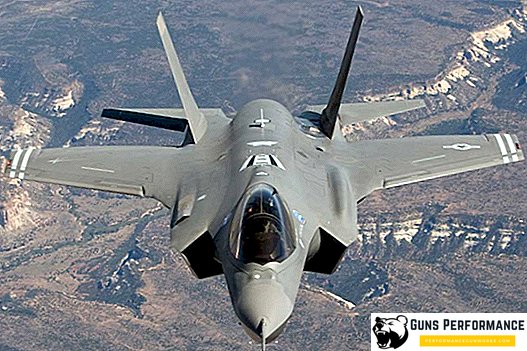
On December 12, 2018, two F-35 Lightning II multi-role fighters arrived in Israel, and this country was the first of the American allies to receive these newest aircraft. Earlier, the military leadership of Israel has repeatedly expressed admiration for the operational capabilities of this fighter of the latest fifth generation. The Israeli Air Force Commander, General Eshel, called the appearance of the F-35 a “real revolution”, which will help his country maintain its air superiority in the region in the next decade, as well as level the threat posed by the Russian S-400 air defense systems deployed in Syria. Total Israel plans to purchase 50 new fighters.
On the other hand, there is little what the military program caused so much controversy and criticism, as the F-35 Joint Strike Fighter. Some experts estimate its final cost of $ 1 trillion (!!!) dollars. Its development began in the late 80s, but even today the readiness of the fighter raises big questions. US President Donald Trump has already promised to force developers to reduce the cost of the fighter. For the domestic “sofa” patriots, the F-35 has long been turned into a favorite target for ridicule, an example of the fact that not only the Russian military-industrial complex can famously cut its budgets. Although it should be noted that the most F-35 criticized just in the West.
So what is the F-35? The plane, which will be a real breakthrough, or failure, which cost the American taxpayer a great deal? If the plane is so bad, then why are the Jews completing their air force with this machine and are happy about it? And why did the Americans even need a second, expensive fifth-generation fighter project?

The F-35 is a family of unobtrusive multi-generation fifth-generation combat aircraft, created as part of the most ambitious program in aviation history - JSF (Joint Strike Fighter, "United Strike Aircraft"). The main developer and manufacturer of the fighter was the American aerospace giant Lockheed Martin, and other equally famous companies also take part in the project: Pratt & Whitney, Northrop Grumman, Rolls-Royce, Allison and British Aerospace.
The first flight of the fighter took place in October 2000, and in 2012 its operation began. Today, the F-35 is already in mass production (albeit in small-scale). Scale to produce the aircraft plan in 2019. In the middle of 2018, 194 aircraft were launched.

F-35 has three "incarnation": a ground fighter, which was developed for the needs of the US Air Force, a fighter with a shortened take-off and vertical landing for the American CMP and British naval forces and the carrier-based fighter for the American fleet. In the future, the Americans plan to replace the F-35 with a number of aircraft that are currently in service: the A-10, F-16, F / A-18 and AV-8B attack aircraft. The British are thinking of using the F-35 instead of their famous VTOL Sea Harrier.
Most often ask, how much is one "thirty-fifth"? The aircraft development program cost the US budget $ 55 billion, each fighter after the start of mass production (depending on its modification) will cost from $ 83 to $ 108 million. One hour of flight of the F-35 costs 30.7 thousand dollars, which is comparable to the cost of the main F-16 fighter.
Currently, the F-35 is already in operation by the American army (more than 130 aircraft of various modifications for 2018), the US began to receive the first vehicles: the Netherlands, Japan, Australia, Italy, Israel and the United Kingdom.
History of creation
The F-35 Lightning II is the result of an ambitious JSF program, the practical part of which began in the mid-90s. The purpose of this program was to create a universal aircraft (fighter-bomber), which would be suitable for arming the Air Force, naval forces, as well as aviation KMP USA.
In other words, the developers wanted to create an aircraft with the maneuverability and speed of a fighter, a significant combat load, as well as the ability to land and take off from the deck of an aircraft carrier. In addition, the modification of the machine, designed for the Marine Corps, had to have a shortened (vertical) take-off and landing. If we add to this the criteria of the fifth-generation fighter, which the aircraft was supposed to meet, the whole complexity of the task becomes clear.
Also, the military insisted that the new fighter had a low purchasing and operating cost. It should be noted that economic factors were in the first place during the implementation of the JSF program: the military wanted to get an inexpensive universal combat platform that would be ideally suited for the use of new precision weapons. Much attention was paid to the cost of maintenance and repair, because these items of expenditure account for more than 60% of the life cycle cost of any modern combat aircraft.

According to the specifications developed at the preliminary stage of the project, the new aircraft was supposed to have moderate supersonic speeds (about one and a half Mach) and maneuverability at the level of F-16 and F / A-18 fighters. The question of cruising supersonic was not originally raised. The new aircraft was rather focused on solving shock tasks, it should also complement the F-22A at the stage of conquering air supremacy. In addition, the new fighter planned to be used to provide air defense aircraft carrier connections.
The design of the new strike aircraft began in the mid-1980s, and research was conducted jointly by NASA and the British Flight Research Center as part of the ASTOVL program. Their goal was to create a percussion aircraft of vertical takeoff and landing to replace the outdated "Harrier".
However, the Cold War was already coming to an end, military budgets were ruthlessly cut, so the program was closed in the early 90s. At about the same time, the US Department of Defense proposed to create a single aircraft that could replace several combat vehicles created in the 1970s and 1980s in the future: F-14, F-15E, F-16, F-111 and F-117.
The research phase of this promising concept was completed in 1994, and a year later, the US Department of Defense prepared a specification for the bidders. It was attended by Boeing and Lockheed Martin, which were engaged in the development of two aircraft demonstrators, X-32 and X-35, respectively.
The final trials began in 2001. They showed that the plane created by Lockheed surpasses its competitor. The X-35 took off from a platform 150 meters long, demonstrated supersonic speed in flight, and was able to land vertically. During the development of the prototype, the designers of "Lockheed" collaborated with the specialists of the Russian Design Bureau named. Yakovlev, therefore, the design of the vertical landing system has similar features with the device of the Soviet VTOL Yak-141. A separate fan was installed on the X-35, not swiveling nozzles, which created numerous problems with exhaust gas entering the air intakes.

Further financing of the JSF program was carried out not only by the US government, but also by a number of their allies in the NATO bloc: Britain, Italy, Denmark, Holland, Canada and Turkey. Interested in the new machine and the Israeli military. Even initially, the cost of the program was impressive: they planned to spend more than $ 230 billion on the development of the fighter and its purchase. However, in fact, the budget was significantly exceeded, and today a number of experts believe that the total amount - including operating costs - will be more than $ 1 trillion.
Development of the aircraft was difficult. In 2002, engineers discovered a significant weighting of its structure. A special group was created, which was engaged in reducing the mass of the fighter.
In 2008, Lockheed Martin announced the performance of the new car, and also demonstrated an experimental model of the aircraft.
The program to create an F-35 fighter experienced a whole range of budgetary price increases and postponements for the start of mass production. A large number of alterations of the units and systems of the aircraft constantly increased the estimate of the project, causing understandable irritation among the states participating in it. Even small changes in the design of the machine led to the replacement of entire production lines, significantly increasing costs.
In March 2010, the purchase price of one fighter increased to $ 113 million, after which the Pentagon said that the cost of the program would increase by 50%. At the same time, in order to save, a proposal was made to abandon the development of the F-35B modification, which caused outrage of the US Marine Corps.
In 2010, Denmark came out of the program, but later this decision was partially revised, and a year later, Australia announced that it had refused to buy fighters, arguing that the decision had almost doubled the cost of the aircraft and delayed the start of deliveries by seven years. Canada and Japan have stated that they may refuse to purchase F-35 if its price continues to increase.

In May 2011, the Pentagon already made a sharp statement that the price of $ 133 million is unacceptable.
In 2010, agreements were reached between the United States and Israel on the purchase of twenty aircraft, the Israelis were allowed to install a significant number of their own production systems on the F-35, primarily electronics.
On February 25, 2011, the first serial F-35B took off, and a few months later the first aircraft was transferred to the US Air Force. In 2013, at the Paris Air Show, Vice President of Lockheed Martin said that Israel would be the first country after the United States to receive the F-35. In November 2014, the US Department of Defense signed a contract for the supply of aircraft, its amount amounted to 4.7 billion dollars.
In 2018, the mass production of aircraft in Italy began. In 2018, the newly elected US President Trump severely criticized the F-35 project because of its exorbitant cost. In response, the developers have promised to reduce the price to $ 85 million by 2019.
Device

The F-35 belongs to the fifth-generation fighter, and its experience in creating the F-22 Raptor was actively used to create it. It should be noted that the F-35 is equipped with more advanced avionics than the Raptor. The fighter’s avionics are undoubtedly the most powerful aspect of this combat platform. The structure of the electronic complex F-35 includes:
- Multifunctional radar with active phased antenna array of the second generation AN / APG-81, which is equally effective in detecting targets both on the ground and in the air.
- Electron-optical system AN / AAQ-37, which includes six infrared sensors located on different sides of the fuselage. It allows you to determine the launch of ballistic missiles at a distance of 1,300 km, provides navigation when piloting both at daytime and at night, warns the pilot of a rocket attack, determines the location of anti-aircraft guns, finds air targets and accompanies them.
- Passive multidirectional infrared camera CCD-TV with high resolution, which can carry out target designation at significant distances, to find enemy objects on the ground and in the air. She also warns the pilot about the irradiation of an airplane with a laser beam.
- Individual Interference Setup System AN / ASQ-239.
- The target designation and display system, which is integrated into the pilot's helmet and allows him to control the machine with the help of head and eye movement. The F-35 pilot's helmet can be called unique in general: it allows the pilot to see literally through the cabin. This ability is provided by a large number of video sensors located on the fuselage of the machine. Also, systems are installed in the helmet, which, using image and sound injection, inform the pilot about the flight conditions.
- The cockpit is fitted with a PCD widescreen touchscreen display, which displays information related to the flight and operation of fighter systems. Also it displays the locations of enemy air defense systems and possible routes of their bypass.
- A voice recognition system with which the pilot can control some F-35 systems.
- The fighter is equipped with a range of advanced aiming and communication systems. These include the Link 16 data exchange complex, which is often referred to as the “heavenly Internet”.

In the design of the aircraft are widely used composite materials and the latest technology. The F-35 is made using stealth technology, the developers have repeatedly stated that its visibility on radar screens is even lower than that of the F-22. To reduce the EPR, the aircraft’s armament is located in the internal compartments, although it can also be placed on the external suspension assemblies. The form of the fighter also helps to reduce its visibility on radar screens.

It should be noted that the cargo compartment of the F-35B modification is smaller than on the F-35A and F-35C due to the fan installation.
Modifications of the fighter A and C are equipped with engines Pratt & Whitney F135 - the further development of the model F119, installed on the "Raptor". On the modification with a shortened take-off is the F-35B, in the development of which the British company Rolls-Royce Defense took part. Initially, the developers of the fighter were not tasked with providing the possibility of a supersonic cruise flight, but the leadership of Lockheed Martin claims that the F-35 is capable of flying at a speed of 1.2 Mach of about 240 km.
An interesting design of the power plant modification F-35B. Behind the cockpit, she has a fan connected by a rigid transmission with the engine; on top and bottom it is closed by flaps. During the hangup, the fan starts to work, and the motor nozzle deflects down almost at a right angle (95 °). Management of the fighter on the yaw and roll by using additional nozzles. Takeoff and landing is fully controlled by the onboard computer, which simplifies the work of the pilot.
F-35B can take off and vertically - though with a small combat load and incomplete tanks.
On the F-35, electrohydrostatic drives of the steering surfaces were used, which made it possible to completely abandon the general aircraft hydraulic system and significantly reduce the mass of the fighter.

F-35 can use a wide range of weapons. All three versions of the aircraft are armed with an automatic 25mm GAU-22 / A cannon, which is located above the left air intake. Her ammunition is 180 shells.

Modifications
- F-35A. The simplest and most massive modification of the aircraft, designed for the US Air Force and its allies. This fighter uses conventional ground runways.
- F-35I. Aircraft designed for the Israeli Air Force. In fact, this is the usual "land" version of the machine (F-35A), on which a part of Israeli equipment is installed: avionics, including EW system and MSA, as well as cabin equipment.
- CF-35. Version of the aircraft F-35A for the Air Force of Canada. It differs from the standard model only by the presence of a braking parachute (due to icy runways) and a change in the air refueling system.
- F-35B. A modification with a shortened (vertical) take-off and vertical landing, designed for the American ILC. This aircraft is planning to make the basis of the strike power of the new amphibious ships of the type "America", which are essentially light aircraft carriers. So far, only Italy is planning to buy fighters of this modification, and the UK has officially abandoned it.
- F-35C. A modification of the aircraft designed for the US and British naval forces. It is designed to take off from the deck of an aircraft carrier using a catapult and landing on it using the finisher (the aircraft has a landing hook). This version of the fighter is characterized by increased wing and tail, which allows it to maneuver more confidently at low speeds and increases the payload. The F-35C has a double radius of action compared to the F / A-18C.

All modifications of the F-35 fighter are unified to 70-90%.
Project Evaluation
The F-35 program is the most expensive military project in the history of mankind. Even this fact alone is an excellent reason for criticism of the aircraft, however, despite the billions of dollars spent and years of development, the F-35 design constantly reveals flaws. The problems of the aircraft with a price of more than one hundred million dollars are perceived by the public especially acutely.

Many experts question the compliance of the F-35 criteria with the fifth generation fighter. First of all, it concerns the flight on supersonic without the use of afterburner. However, the developers have repeatedly stated that the fighter has this capability. There are questions to the technology of invisibility. In 2018, the F-35 lost the air battle of the F-15 due to poor-quality stealth coating on the fuselage.
The fighter’s operating system raises many questions. During a recent test, the military was able to detect 276 potential vulnerabilities in it. However, if the software will eventually be finalized, then there are drawbacks that cannot be fixed. These include the following:
- Недостаточная тяговооруженность (0,8-0,85), которая обусловлена сильно возросшей массой машины во время ее доработки.
- Высокая удельная нагрузка на крыло, что существенно уменьшает маневренность истребителя.
- Сравнительно небольшая масса вооружения, которую самолет может принять во внутренние отсеки.
- Из-за довольно большой минимальной скорости, малой полезной нагрузки и чувствительности к огню с земли F-35 может оказаться недостаточно эффективным в качестве самолета непосредственной поддержки войск. Старый и испытанный А-10 "Тандерболт" в этом отношении выглядит куда предпочтительней.

К сильным сторонам F-35 можно смело отнести малую заметность для РЛС противника и мощнейший комплекс БРЭО самолета. Однако помогут ли они истребителю в реальном воздушном бою - этот вопрос остается открытым.
В завершение отметим: несмотря на всю критику, F-35 все же является довольно совершенной и передовой машиной. По-другому и быть не могло: слишком уж серьезные ресурсы - финансовые, организационные, интеллектуальные - вложила Америка в этот проект. Большинство проблем F-35 были изначально заложены в концепции этого самолета, а также в понимании его места в структуре вооружения американских ВВС.
Плохую шутку с американцами сыграла излишняя самонадеянность: посчитав, что в новом столетии у них уже не будет достойных противников, они начали создавать истребитель для войн наподобие балканской или иракской кампании, в которых противник изначально был слабее практически по всем параметрам.
Однако ситуация в мире развивается несколько по иному сценарию, в нем появляются новые центры силы - государства, уделяющие существенное внимание развитию вооруженных сил, в том числе и эффективной авиации. С большой долей вероятности можно сказать, что американским пилотам в будущем придется встретиться в небе с достойными противниками. И сможет ли F-35 гарантировать им победу - это очень большой вопрос.


